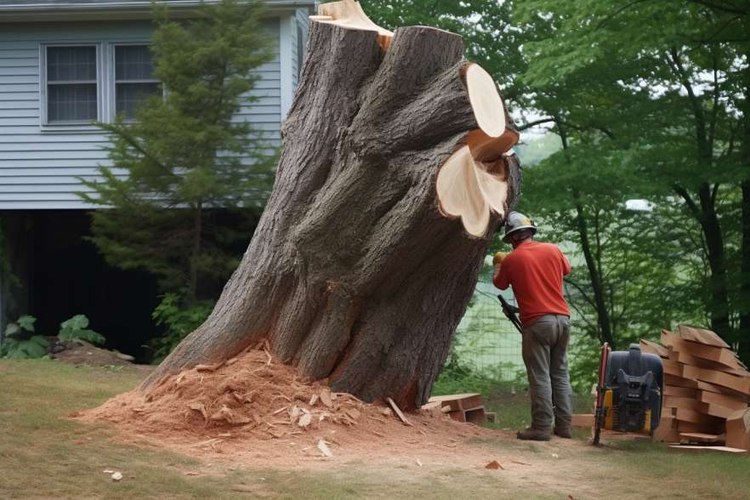How to Cut Trees Safely and Find Trusted Tree Removal Experts Near You
When trees become hazardous, overgrown, or diseased, proper removal becomes essential for protecting your property and ensuring safety. While some homeowners attempt DIY tree cutting, this dangerous task requires specialized knowledge, professional equipment, and years of experience to execute safely. Understanding the complexities of tree removal and knowing how to identify qualified professionals can save you from costly mistakes, property damage, and serious injuries.

What Safety Techniques Do Professional Tree Cutters Use?
Learn the safest techniques used by professionals for tree cutting and removal, starting with proper assessment and planning. Professional arborists begin every job by evaluating the tree’s condition, lean, size, and surrounding hazards. They identify potential obstacles like power lines, buildings, and other vegetation that could complicate the removal process.
The directional felling technique represents the foundation of safe tree cutting. Professionals create precise notch cuts on the side where they want the tree to fall, followed by a back cut that controls the tree’s descent. For larger trees near structures, professionals employ sectional removal, cutting the tree in manageable pieces from top to bottom using specialized rigging equipment.
Safety equipment forms another crucial component. Professional tree services use hard hats, safety glasses, chainsaw chaps, steel-toed boots, and climbing harnesses. They also maintain their chainsaws properly, ensuring sharp chains and proper tension for clean, controlled cuts.
How Do You Choose Qualified Tree Removal Experts?
Discover how to choose trusted experts with the right tools and experience by focusing on credentials and qualifications first. Look for certified arborists who have completed training through organizations like the International Society of Arboriculture. These professionals understand tree biology, proper cutting techniques, and safety protocols.
Insurance coverage represents a non-negotiable requirement. Reputable tree services carry both liability insurance and workers’ compensation coverage. Request to see current insurance certificates before hiring any company, as uninsured contractors can leave you financially responsible for accidents or property damage.
Experience with similar projects matters significantly. Ask potential contractors about their experience with trees similar to yours in size and species. Request references from recent customers and take time to verify their work quality and professionalism.
What Equipment Should Professional Tree Services Have?
Professional tree removal requires specialized equipment that most homeowners don’t possess. Chainsaws represent just one tool in a comprehensive arsenal. Legitimate tree services own various chainsaw sizes for different cutting tasks, from small pruning saws to powerful felling saws for large trees.
Aerial equipment enables safe access to tall trees and precise sectional removal. This includes bucket trucks, climbing gear, rigging ropes, and pulleys for controlled lowering of tree sections. Stump grinders allow complete tree removal by eliminating remaining stumps below ground level.
Wood chippers handle debris removal efficiently, turning branches and smaller sections into mulch. Professional services also maintain first aid equipment and communication devices for emergency situations.
How Can You Find Reliable Local Tree Services?
Explore local services that specialize in reliable and secure tree removal through multiple research channels. Start with online searches for tree services in your area, but don’t rely solely on internet results. Check with local garden centers, landscaping suppliers, and hardware stores for recommendations, as they often know reputable contractors.
Local Better Business Bureau listings provide valuable insight into company reputations and complaint histories. Municipal offices sometimes maintain lists of licensed tree services, particularly in areas requiring permits for tree removal.
Word-of-mouth recommendations from neighbors, friends, and local contractors often yield the most reliable leads. People who have recently used tree services can provide honest feedback about work quality, pricing, and professionalism.
What Unique Considerations Apply to Different Regions?
Tree removal challenges vary significantly based on geographic location and climate conditions. In hurricane-prone coastal areas, emergency tree services often experience high demand during storm seasons, making advance planning crucial for routine maintenance.
Northern regions with frequent ice storms require contractors experienced in safely removing ice-damaged trees, which present unique hazards due to unpredictable branch failure. Desert areas may have specific regulations protecting certain native tree species, requiring specialized permits for removal.
Urban environments present additional challenges with limited access, overhead utilities, and proximity to neighboring properties. Rural locations might have easier access but could face longer response times for emergency services.
What Should You Expect Regarding Tree Removal Costs?
Tree removal costs vary significantly based on tree size, location complexity, and regional labor rates. Understanding typical pricing helps you identify reasonable quotes and avoid unrealistic estimates.
| Service Type | Tree Size | Cost Range | Key Factors |
|---|---|---|---|
| Small Tree Removal | Under 25 feet | $150 - $500 | Easy access, minimal cleanup |
| Medium Tree Removal | 25-50 feet | $500 - $1,200 | Moderate complexity, standard equipment |
| Large Tree Removal | 50-80 feet | $1,200 - $3,000 | Specialized equipment, sectional removal |
| Emergency Removal | Any size | $500 - $5,000+ | Urgency premium, storm damage complexity |
| Stump Grinding | Per stump | $75 - $300 | Stump diameter, root system extent |
Additional factors affecting costs include permit requirements, debris disposal, proximity to structures, and seasonal demand fluctuations. Emergency services during storms typically command premium rates due to increased risk and urgent timelines.
Prices, rates, or cost estimates mentioned in this article are based on the latest available information but may change over time. Independent research is advised before making financial decisions.
What Red Flags Should You Avoid When Hiring?
Several warning signs indicate potentially unreliable or dangerous tree services. Door-to-door solicitors offering immediate services at steep discounts often lack proper insurance and qualifications. Legitimate tree services rarely need to solicit business this way.
Cash-only payment requirements suggest unprofessional operations that may not carry proper insurance or pay appropriate taxes. Reputable companies accept multiple payment methods and provide detailed written estimates.
Extremely low bids compared to other estimates often indicate corner-cutting that compromises safety or quality. While competitive pricing is normal, dramatically low quotes may signal inadequate insurance, inexperienced crews, or substandard equipment.
Tree removal combines significant safety risks with specialized technical requirements that make professional expertise essential. By understanding proper techniques, researching qualified contractors thoroughly, and maintaining realistic cost expectations, property owners can ensure safe, effective tree removal that protects both people and property while preserving the long-term health of their landscape.




